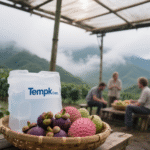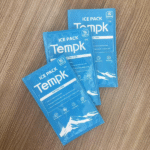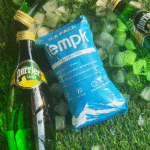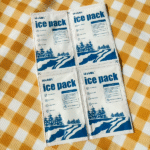The rise of biologics, gene therapies and time sensitive medicines means that pharmaceutical cold chain companies are more important than ever. Pharmaceutical cold chain companies handle temperature controlled storage, packaging and transport to ensure vaccines, biologics and gene therapies remain safe from manufacture to patient delivery. The global pharmaceutical cold chain logistics market was about US$18.61 billion in 2024 and is projected to reach US$27.11 billion by 2033 at a compound annual growth rate of 4.3%. Choosing the right partner can seem daunting, but this guide helps you evaluate providers, understand innovations and identify trends shaping the industry in 2025.

Identify key services offered by pharmaceutical cold chain companies, from end to end logistics to specialized packaging, using long tail keywords such as pharma cold chain logistics companies.
Compare leading logistics providers and packaging innovators in 2025, including UPS Healthcare, DHL, FedEx, and Cold Chain Technologies.
Understand cutting edge technology and equipment, such as reusable pallet shippers, cryogenic dewars and fiber based packaging.
Learn how IoT and AI improve cold chain monitoring and reduce product loss, using relevant long tail keywords like cold chain monitoring technology.
Explore sustainability and regulatory trends, with insights on reducing carbon footprints and meeting Good Distribution Practice (GDP) standards.
Find practical tips and a checklist to select the best partner and optimize your cold chain operations.
What services do pharmaceutical cold chain companies provide?
Pharmaceutical cold chain companies ensure medicines stay within strict temperature ranges. They provide integrated solutions that include warehousing, insulated packaging, transportation, monitoring and regulatory compliance. The core services include:
Temperature controlled storage: Warehouses, refrigerated rooms and cryogenic freezers maintain product integrity for drugs requiring +2 °C to +8 °C, –20 °C or cryogenic conditions (–150 °C).
Insulated packaging: Single use and reusable shippers with phase change materials protect shipments and allow last mile delivery even at –70 °C.
Real time monitoring: IoT sensors and RFID tags continuously track temperature, humidity and location, providing early alerts to prevent spoilage.
Logistics coordination: Route planning, customs clearance and documentation to ensure timely delivery and minimize delays.
Regulatory compliance: Adherence to GDP standards and regional regulations reduces legal risk and guarantees quality.
These services work together like runners in a relay race; each handoff must keep the payload within the required temperature range. Without such coordination, sensitive biologics could lose potency and jeopardize patient safety.
How are biologics changing cold chain demand?
Biologics account for roughly 30% of all drugs and often require narrow temperature ranges. The COVID 19 pandemic highlighted the need for ultra cold storage, accelerating investment in infrastructure. About 20% of new drugs in development are gene and cell based therapies requiring close temperature control. As a result, pharmaceutical cold chain companies must offer cryogenic storage, specialized packaging and faster transit times.
Which pharmaceutical cold chain companies lead the industry in 2025?
Third party logistics providers and integrators
Companies like UPS Healthcare, DHL Life Sciences & Healthcare and FedEx dominate the logistics segment by investing heavily in fleet capacity, acquisitions and digital platforms. Their global networks provide end to end transportation and warehousing, including last mile delivery.
| Company | Core services | Distinguishing features | Benefit to you |
| UPS Healthcare | Global cold chain transport, warehousing and supply chain integration | Aggressive acquisitions of Frigo Trans and BPL; agreement to acquire Andlauer Healthcare Group for US$1.6 billion; investment of over €20 million in 2024 to double temperature controlled vehicles and expand distribution space to 1.7 million m² | Broader network with cryogenic capacity; reduced product loss due to integrated monitoring and an expanded fleet |
| DHL Life Sciences & Healthcare | Temperature controlled air and ground transport, storage and packaging | Acquired CRYOPDP, a specialty courier handling 600,000 shipments per year in 15 countries. The deal forms a strategic partnership with Cryoport to enhance pharma logistics | Enhanced global coverage and white glove courier expertise for clinical trials, biopharma and cell gene therapies |
| FedEx | Express and Custom Critical services for air and ground cold chain | Expands cold chain capacity with IoT sensors and blockchain traceability | Visibility and security through real time tracking; flexible service levels across modes |
| CEVA Logistics & Kuehne+Nagel | Specialized pharmaceutical logistics, GDP compliant warehouses and last mile delivery | Partner with airlines and biotech firms; develop rental models for reusable packaging. CEVA notes that reusable packaging adoption could double from 30% to 70% in coming years | Collaboration and sustainable packaging options that reduce waste and cost |
| VersaCold & Lineage Logistics | Extensive cold storage networks | Incorporate warehouse robotics and smart software to optimize energy consumption and maintain temperature integrity | Energy efficient operations with scalability across North America and Asia |
| AmerisourceBergen & Cardinal Health | Pharmaceutical distribution and packaging services | Provide cold chain packaging via subsidiary Sonoco ThermoSafe, delivering high volume shipments to hospitals and pharmacies | Reliability and broad distribution channels, including real time monitoring |
Packaging and equipment specialists
Packaging innovators design containers that maintain stable temperatures, reduce waste and support reusability. Key players include:
Cold Chain Technologies (CCT) – In April 2025, CCT launched the CCT Tower Elite, a reusable universal pallet shipper unveiled at LogiPharma 2025. The 1600 liter design accommodates both Euro and US pallets and is the lightest solution of its kind. It maintains four temperature ranges (<–60 °C, –20 °C, +5 °C, +20 °C) for over 120 hours without external power, uses phase change materials or dry ice and includes an integrated IoT system for real time monitoring.
C Safe Global – Known for active heating and cooling containers, C Safe offers multi use dewars for cell and gene therapies. The dewars use liquid nitrogen dry vapor technology to maintain –150 °C or colder and integrate TracSafe RLT real time tracking devices.
Pelican BioThermal – Provides reusable Crēdo™ Cube containers and single use CoolPall™ boxes; integrated data loggers track temperature. Its flexible Crēdo™ Go solution adapts to different program needs.
Envirotainer – Offers active air cargo containers with compressor driven cooling and battery power to maintain stable temperatures; considered essential for transporting gene therapies at –70 °C.
DS Smith – Introduced TailorTemp®, a fiber based, temperature controlled packaging solution showcased at PharmaPack Europe 2025. Made entirely from corrugated cardboard, TailorTemp is 100% recyclable, can be shipped flat to reduce transport costs, and maintains cool temperatures for 36 hours. DS Smith plans to extend cooling to 96 hours as materials improve.
Summit Appliance, Philipp Kirsch and Binder – Manufacture medical refrigerators, ultra low temperature freezers and climate chambers operating from –40 °C to –90 °C with password protection and alarms.
Azenta & Thermo Fisher Scientific – Provide automated storage and cryogenic transport solutions; Thermo Fisher’s subsidiary CSafe introduced multi use dewars with real time tracking to transport cell and gene therapies at –150 °C.
Technology and monitoring providers
The cold chain ecosystem also includes providers of digital platforms and sensors. Sensitech launched TempTale GEO X in February 2024, an IoT temperature monitoring solution tailored for life sciences logistics. TransVoyant and CargoSense use AI to predict disruptions and create digital twins. Tag N Trac offers Bluetooth and cellular trackers for real time visibility. These technologies increase transparency and help companies meet stringent GDP requirements.
How leading companies differentiate
The table below summarizes how top providers stand out and how their differentiators translate into practical benefits.
| Company | Differentiators | Practical Benefit |
| UPS Healthcare | Aggressive acquisition strategy (Frigo Trans, BPL, Andlauer), expanded fleet and facilities | Unparalleled reach, enhanced cryogenic capacity and integrated visibility across the supply chain |
| DHL Life Sciences & Healthcare | Acquisition of CRYOPDP, integration with DHL Express and DHL Global Forwarding | White glove courier expertise for clinical trials and cell gene therapies; global network synergy |
| FedEx | Investment in IoT sensors and blockchain for traceability | Real time shipment tracking and secure, tamper evident records |
| CEVA Logistics | Rental model for sustainable packaging; collaboration with drug manufacturers | Cost effective reusable packaging that reduces waste and supports sustainability goals |
| CCT Tower Elite | Lightweight 1600 L pallet shipper, four temperature ranges, integrated IoT | Universal compatibility and long hold time without power, reducing operational complexity and waste |
| DS Smith TailorTemp | 100% recyclable fiber based packaging with 36 hour cooling | Sustainable alternative to expanded polystyrene (EPS); flat pack shipping lowers costs and carbon emissions |
How do innovations like IoT and AI transform cold chain operations?
Real time monitoring is the backbone of modern cold chain logistics. IoT sensors embedded in packaging and vehicles monitor temperature, humidity and location continuously. When linked to cloud platforms, they trigger alerts for deviations, enabling rapid intervention. For example, Sensitech’s TempTale GEO X provides real time analytics across modes and enhances supply chain efficiency.
Artificial intelligence (AI) and predictive analytics help logistics providers anticipate delays and optimize routes. By creating digital twins of shipments and supply chains, AI models can simulate various scenarios and suggest proactive measures. TransVoyant and CargoSense use AI to predict shipment issues before they occur. UPS and FedEx integrate AI into network planning to reduce dwell times and manage capacity.
Robotics and automation in warehouses improve throughput and consistency. Studies suggest that many warehouses remain unautomated, presenting growth potential. Automated storage and retrieval systems (AS/RS) and robotic handling reduce labor costs, minimize errors and improve temperature control. For example, Lineage Logistics integrates warehouse robotics and smart software to maintain energy efficiency.
Blockchain and traceability solutions ensure data integrity. FedEx uses blockchain for tamper proof temperature logs, enabling regulators and customers to verify compliance. Blockchain can also streamline customs clearance and reduce paperwork.
What packaging and equipment solutions are available?
Reusable pallet shippers and parcel containers
Reusable pallet shippers like CCT Tower Elite and CSafe’s Multi Use Dewars offer extended holding times and integrated monitoring. CCT Tower Elite uses phase change materials or dry ice to maintain temperatures across four ranges and includes an IoT system for near real time tracking. CSafe’s dewars maintain –150 °C using liquid nitrogen and feature real time tracking via TracSafe RLT devices.
Fibre based and recyclable packaging
Sustainability is a key driver. DS Smith’s TailorTemp packaging is made entirely from corrugated cardboard, is 100% recyclable and can be shipped flat, reducing transportation costs. The design currently maintains cool temperatures for 36 hours, with plans to extend to 96 hours. Ranpak’s RecyCold climaliner and 2nd Level Global Solutions’ Solaris paper based thermal pallet covers provide recyclable alternatives, demonstrating industry wide progress.
Ultra low temperature freezers and cryogenic systems
Summit Appliance, Philipp Kirsch and Binder manufacture refrigerators and freezers that operate from –40 °C to –90 °C and include password protection and alarm systems. Azenta and Thermo Fisher offer automated storage solutions and cryogenic dewars, ensuring safe transport of cell and gene therapies at –150 °C.
How can you select the right pharmaceutical cold chain partner?
Choosing a partner requires assessing service scope, technology, network reach, sustainability practices and regulatory compliance. Use the following checklist to guide your evaluation:
Assess network coverage: Confirm that providers have facilities near your manufacturing sites and customer locations to reduce transit time.
Verify temperature ranges: Ensure the company can handle the specific temperature range your product requires (e.g., +2 °C to +8 °C, –20 °C, cryogenic).
Evaluate monitoring technology: Look for providers using IoT sensors, real time dashboards and predictive analytics. Companies like Sensitech, TransVoyant and CargoSense offer solutions that reduce spoilage.
Check sustainability commitments: Ask about reusable packaging, renewable energy, and carbon reduction targets. DS Smith’s TailorTemp and CCT’s Tower Elite illustrate sustainable innovation.
Review certifications and compliance: Confirm adherence to GDP, ISO standards and local regulations. Verify that employees receive regular training and that facilities undergo periodic audits.
Compare cost structures: Evaluate pricing models, including rental options for reusable containers. Consider total cost of ownership, including return logistics for reusable packaging.
Ask for performance metrics: Request data on on time deliveries, temperature excursions, and spoilage rates. High on time performance and low excursion rates indicate reliability.
Practical tips and recommendations
For clinical trials: Choose a partner experienced in managing investigational medicinal products. White glove couriers like CRYOPDP (now part of DHL) specialize in clinical trial logistics.
For cell and gene therapies: Require ultra cold conditions; look for providers offering cryogenic dewars (C Safe, Thermo Fisher) and active containers (Envirotainer).
For vaccines and biologics: Use providers with robust last mile networks and sustainable packaging, such as UPS Healthcare, DHL and CEVA Logistics. Consider fiber based packaging like DS Smith’s TailorTemp.
For small businesses: Consider partnering with third party logistics providers that offer scalable solutions and access to cutting edge technology without large capital investment.
Case Study: In early 2025, UPS Healthcare finalized its acquisition of German cold chain specialists Frigo Trans and BPL, enhancing its European network. The acquisition provided cryogenic transport capabilities ranging from –196 °C to +25 °C and integrated Pan European cold chain transportation. This expansion means pharmaceutical clients in Europe can ship gene therapies and biologics without switching providers mid journey, ensuring product integrity and reducing risk.
What are the latest trends and developments in 2025?
Sustainability and circular packaging
The cold chain industry contributes around 4% of global greenhouse gas emissions, prompting regulators and customers to demand more sustainable practices. Innovations include:
Fibre based packaging: DS Smith’s TailorTemp demonstrates how recyclable materials can replace expanded polystyrene, providing 36 hour thermal stability and plans for 96 hours.
Reusable packaging adoption: CEVA Logistics notes that utilization rates of reusable temperature controlled packaging could rise from 30% to 70%, driven by rental models and collaboration.
Renewable energy and alternative fuels: DHL is focusing on sustainable packaging and alternative fuels across its network. UPS invests in energy efficient vehicles and warehouses.
Carbon accounting tools: Many providers now offer dashboards that calculate carbon emissions per shipment, helping clients meet ESG targets.
Technology and digital transformation
Real time monitoring and predictive analytics continue to grow. TempTale GEO X and AI driven platforms like TransVoyant reduce spoilage and improve planning.
Automation and robotics are being deployed in cold warehouses. While around 80% of warehouses remain unautomated, innovations such as automated storage and retrieval systems and robotic palletizers are gaining traction.
Blockchain for traceability ensures tamper proof records and supports regulatory compliance.
Market growth and M&A
The pharmaceutical cold chain market is set to grow from US$18.61 billion in 2024 to US$27.11 billion by 2033. Demand is fueled by the increasing share of biologics and gene therapies, requiring specialized logistics.
Mergers and acquisitions continue: UPS acquired Frigo Trans and BPL and agreed to buy Andlauer Healthcare Group, while DHL acquired CRYOPDP. These deals expand networks and deepen capabilities.
Regulatory tightening and quality standards
Regulatory bodies tighten enforcement of Good Distribution Practice (GDP). Companies must demonstrate validated processes, documentation and training. Real time monitoring and digital quality management systems are increasingly necessary to meet auditors’ expectations.
Frequently Asked Questions
Q1: What makes pharmaceutical cold chain companies different from standard logistics providers?
Cold chain companies specialize in maintaining narrow temperature ranges, using insulated packaging, refrigerated vehicles, IoT monitoring and compliance protocols. Standard logistics often lack these specialized systems.
Q2: How do reusable pallet shippers reduce costs?
Reusable pallet shippers like CCT Tower Elite or CSafe dewars can be rented. Although initial rental costs may be higher than single use packaging, reusability reduces waste and total cost of ownership.
Q3: Are fiber based cold chain packages as reliable as EPS?
DS Smith’s TailorTemp packaging has proven to maintain temperatures for 36 hours and is made from 100% recyclable corrugated cardboard. The company aims to extend this to 96 hours, showing strong reliability and sustainability.
Q4: Which providers offer cryogenic transport for gene therapies?
Envirotainer supplies active air cargo containers with compressor driven cooling and battery power, enabling –70 °C transport. CSafe’s Multi Use Dewars maintain –150 °C using liquid nitrogen.
Q5: What should I look for when evaluating monitoring technology?
Ensure sensors provide continuous temperature and location data, integrate with dashboards, and support predictive analytics. Real time alerts and compliance reporting are key features.
Q6: How will automation impact cold chain logistics?
Automation will improve accuracy, reduce labor costs and enhance energy efficiency. With 80% of warehouses still not automated, the adoption of robotics and automated storage systems is expected to accelerate by 2028.
Q7: How can I reduce the environmental impact of my cold chain operations?
Use reusable packaging, choose providers that invest in renewable energy and electric vehicles, and consider fiber based solutions. Calculate and track carbon emissions per shipment to make data driven decisions.
Summary and Recommendations
The pharmaceutical cold chain industry is evolving rapidly. Key trends for 2025 include sustainability, real time monitoring, reusable packaging, and consolidation through acquisitions. Leading logistics providers like UPS Healthcare, DHL Life Sciences & Healthcare, FedEx, CEVA and Kuehne+Nagel are expanding their networks and investing in technology to meet the growing demand for biologics and cell gene therapies. Packaging innovators such as Cold Chain Technologies, C Safe Global and DS Smith offer reusable and recyclable solutions that extend temperature stability and reduce waste. To choose the right partner, assess network reach, technology, sustainability practices and compliance. Use reusable packaging, leverage IoT monitoring and adopt AI to optimize operations. Remember that sustainable practices not only reduce emissions but also lower costs and enhance brand reputation.
Actionable next steps
Audit your current cold chain process: Identify gaps in storage, packaging, transit and monitoring. Evaluate temperature excursion rates and spoilage incidents.
Define your temperature requirements: Match your product’s stability profile to providers’ capabilities (+2 °C to +8 °C, –20 °C or cryogenic).
Shortlist providers: Compare logistics integrators and packaging specialists based on network coverage, service scope, sustainability commitments and technology offerings.
Request proposals and pilot runs: Ask shortlisted companies for performance metrics, and conduct pilot shipments to validate temperature stability and service quality.
Negotiate contracts with flexibility: Choose rental options for reusable packaging and ensure service level agreements include penalties for temperature excursions.
Implement continuous improvement: Collect data from IoT sensors, analyze trends and work with partners to address bottlenecks. Review performance quarterly and adjust strategies.
About Tempk
At Tempk, we develop innovative cold chain packaging solutions for pharmaceuticals, food and other temperature sensitive products. Our products range from reusable insulated boxes and bags to gel ice packs, phase change materials and electric cooler bags. We invest in R&D to create eco friendly, recyclable materials and offer customized packaging tailored to your payload and temperature requirements. We guarantee product safety through strict quality control, validated thermal performance and compliance with GDP standards. With a focus on sustainability and customer satisfaction, we help you simplify your cold chain operations and protect your valuable cargo.
Call to action
Ready to secure your biologics with reliable cold chain packaging? Contact Tempk today to discuss your specific needs and discover how our reusable solutions can reduce costs and environmental impact. Our experts will help you design a tailored packaging strategy that ensures product integrity from factory to patient.






















